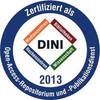In: Wagner, Wolfgang (Hrsg.): 100 years ISPRS advancing remote sensing science : ISPRS Technical Commission VII symposium; 1910 - 2010 centenary celebration Vienna; Vienna, Austria, July 5 - 7, 2010 : Pt. B Papers accepted on the basis of peer-reviewed abstracts. Lemmer, GITC 2010, pp. 35-40 (International archives of photogrammetry, remote sensing and spatial information sciences ; 38/7B)
Preview |
PDF, English
- main document
Download (3MB) | Terms of use |
Abstract
In this paper we describe an approach to classify forested areas based on their vertical vegetation structure using Airborne Laser Scanning (ALS) data. Surface and terrain roughness are essential input parameters for modeling of natural hazards such as avalanches and floods whereas it is basically assumed that flow velocities decrease with increasing roughness. Seeing roughness as a multi-scale level concept (i.e. ranging from fine-scale soil characteristics to description of understory and lower tree level) various roughness raster products were derived from the original ALS point cloud considering specified point-distance neighborhood operators and plane fitting residuals. Aiming at simplifying the data structure for use in a standard GIS environment and providing new options for ALS data classification these raster layers describe different vertical ranges of the understory and ground vegetation (up to 3 m from ground level) in terms of overall roughness or smoothness. In a predefined 3D neighborhood the standard deviation of the detrended z-coordinates of all ALS echoes in the corresponding vertical range was computed. Output grid cell size is 1 m in order to provide consistency for further integration of high-resolution optical imagery. The roughness layers were then jointly analyzed together with a likewise ALS-based normalized Digital Surface Model (nDSM) showing the height of objects (i.e. trees) above ground. This approach, in the following described as ‘vertical roughness mapping’, enables classification of forested areas in patches of different vegetation structure (e.g. varying soil roughness, understory, density of natural cover). For validation purposes in situ reference data were collected and cross-checked with the classification results, positively confirming the general feasibility of the proposed vertical roughness mapping concept. Results can be valuable input for forest mapping and monitoring in particular with regard to natural hazard modeling (e.g. floods, avalanches).
| Document type: | Book Section |
|---|---|
| Editor: | Wagner, Wolfgang |
| Title of Book: | 100 years ISPRS advancing remote sensing science : ISPRS Technical Commission VII symposium; 1910 - 2010 centenary celebration Vienna; Vienna, Austria, July 5 - 7, 2010 : Pt. B Papers accepted on the basis of peer-reviewed abstracts |
| Series Name: | International archives of photogrammetry, remote sensing and spatial information sciences |
| Volume: | 38/7B |
| Publisher: | GITC |
| Place of Publication: | Lemmer |
| Date Deposited: | 30 Jul 2025 08:17 |
| Date: | 2010 |
| Page Range: | pp. 35-40 |
| Faculties / Institutes: | Fakultät für Chemie und Geowissenschaften > Institute of Geography |
| DDC-classification: | 550 Earth sciences |
| Uncontrolled Keywords: | Forestry, Hazards, Mapping, Vegetation, Classification, Laser scanning |
| Further URL: |









